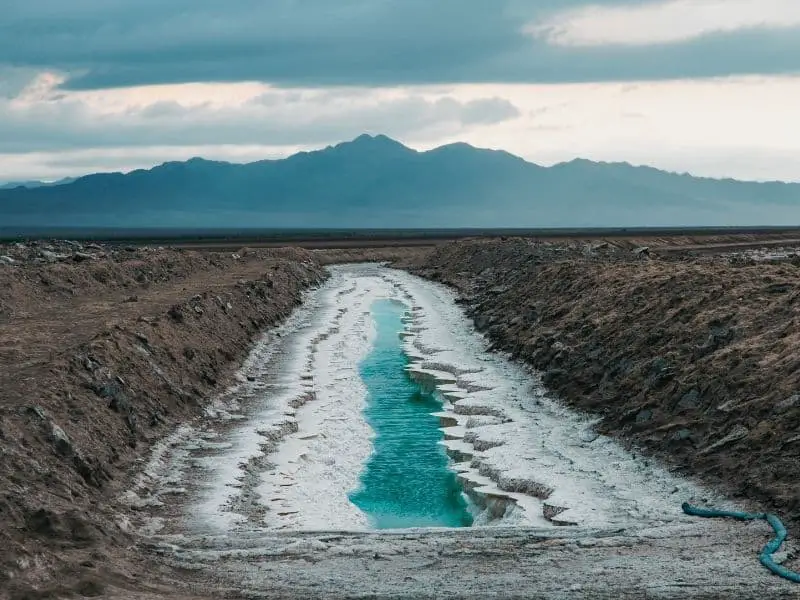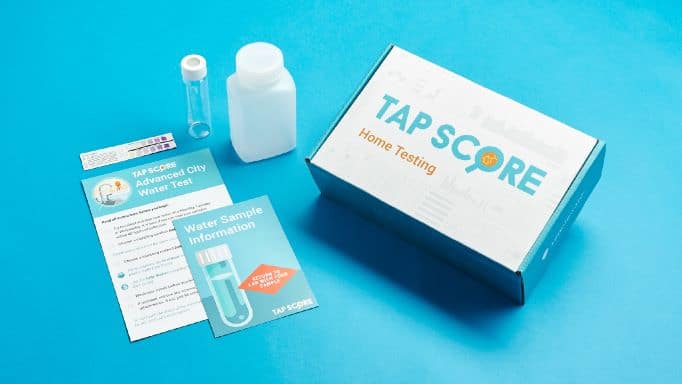
In today’s article, we’ll be discussing everything you need to know about chloride in drinking water. We will let you know what benefits it offers, how to test for it, and the best ways to manage high chloride levels.
What is Chloride?
It is a compound which primarily consists of chlorine, a known ingredient in bleach and other cleaning products. Chloride, specifically, works as an electrolyte used to balance the acid and base levels in drinking water [1].
How Does Chloride Get Into Drinking Water?
Chloride occurs naturally in our environment, particularly in bodies of water. It’s often found alone as salt or sodium chloride, but it often appears alongside calcium and potassium, too.
Because this is a natural phenomenon, elevated chloride levels are sometimes detected in tap water. These high levels are caused by the weathering of soils, movements of geological formations, precipitation, and transferred through our food [2].
Chloride is also found in public water systems (eg. city water) or private well systems that use chlorine for water treatment. Well water can also be contaminated with fertilizers or road salts.
Chloride, as long as it’s ingested in safe amounts, possesses no real health concerns. In actuality, it even has several benefits to the human body.

Softeners, Added Chloride and Drinking Water
Besides the natural occurrences that we spoke about, chloride can also be added to our domestic drinking water intentionally, when using a water softener. This helps to soften water and make it more appetizing to drink.
If you have a water softener, and you think you have too much chloride in your water then consider some of the options for removing it we’ll talk about below.
Benefits of Drinking Chloride in Drinking Water
By its very essence, chloride concentration acts as a sanitizing agent to improve the water quality in a particular area. Besides that, it aids in many different bodily functions, too. Here are a few examples.
- Kills Harmful Bacteria – As a natural cleaner, chloride eliminates any dangerous pathogens that enter our bodies. It may also boost one’s immune system, too, to prevent any diseases [3].
- Maintains Our Body’s Fluidity – Sodium chloride holds moisture in, and when inside the human body, it helps control the water that passes through cells. This helps ensure that they function properly.
- Aids in Digestion – Chloride manages the production of hydrochloric acid, which is a key component when breaking down nutrients from food [4].

Negatives of Chloride in Drinking Water
While this is generally safe to consume, drinking water with elevated chloride levels can cause some minor health risks. Similarly, if the chloride content is too low, it may create an unpleasant taste.
To err on the side of caution, you may want to watch out for the following issues:
- an increase in blood pressure
- a paltry after-taste
- damaged pipes and appliances
Let’s take a closer look at each one.
Symptoms and Health Concerns
As we mentioned earlier, human health concerns are very low. However, for those who already have existing cardiovascular issues, drinking water with elevated chloride levels may affect how easily blood and oxygen circulate in your body. This could result in high blood pressure, headaches, or slight weakness [5].

Unpleasant Salty Taste
This is probably the most common side effect of chloride in water, and is often experienced by those living in coastal areas.
A salty taste only means it will be very difficult to consume. You will probably need to take extra steps – such as using a water filter or a home distiller – to remove this flavor completely.

Dangers to Pipes and Appliances
Sodium chloride, in particular, has a degrading effect on metal objects, including pipes and common household appliances. Hot water heaters are a common victim of this because of their increased temperatures. The mineral’s highly abrasive nature damages the alloy material, causing it to corrode, so some potentially dangerous fragments (like iron or lead) seep into your food or water [6].
What are the Permissible Limits of Sodium Chloride in Tap Water?
According to the United States Environmental Protection Agency (EPA), chloride must not exceed 60-milligrams per liter in drinking water. For those who are taste sensitive or suffer from existing kidney issues, 30-milligrams would be a safe threshold for chloride concentrations.
How to Test for Chloride in Water?
The most accurate way to get your water tested is through a chloride water test, and MyTapScore offers a great option. All you need to do is collect a sample, send it to their partner labs, and in a few days, you’ll receive a personalized analysis, complete with what steps to take next.
For more information, visit their website at https://mytapscore.com/products/chloride-water-test.
We recommend My Tap Score’s Chloride Water Test. It tests specifically for chloride.
If you’re worried about high chloride levels and corrosion that may release hazardous metals into your water then this is the test for you.
Order now for free shipping and you’ll receive your results within five days.
Filtration and Treatment Options for Removing Chloride
There are several treatment methods for treating elevated levels of chloride in your water.
Distillation
This would require you to boil the water first, then in a chamber, the condensed particles turn into potable drinking water. Distillation, though, demands constant maintenance. The output also isn’t sufficient, given the amount of work it involves.
Deionization
As we discussed with potassium chloride, this method operates like a water softener. It uses a positive charge to remove – and ultimately replace – any ions with hydrogen. When they re-engage, it then creates soft water [7].
Reverse Osmosis
Among the strategies we discussed here today, this is probably the most feasible – and practical. Reverse Osmosis uses intense pressure to remove contaminants through a membrane. As it passes through, the minerals are filtered, and then eventually discharged through a different valve.
Nowadays, you can easily buy a Reverse Osmosis Water System, many of which are countertop models. There are currently countless options to choose from. To make your life easier, at Home Water Research, we’ve compiled a list of the best options on the market today. Check them out at: https://homewaterresearch.com/best-countertop-ro-water-filters/.
Of the choices we evaluated, the AlcaPure Reverse Osmosis Water Filter System immediately catches your attention. It is capable of removing up to 99-percent of contaminants, cleanses elevated chloride levels, and even re-uses any undrinkable water.

